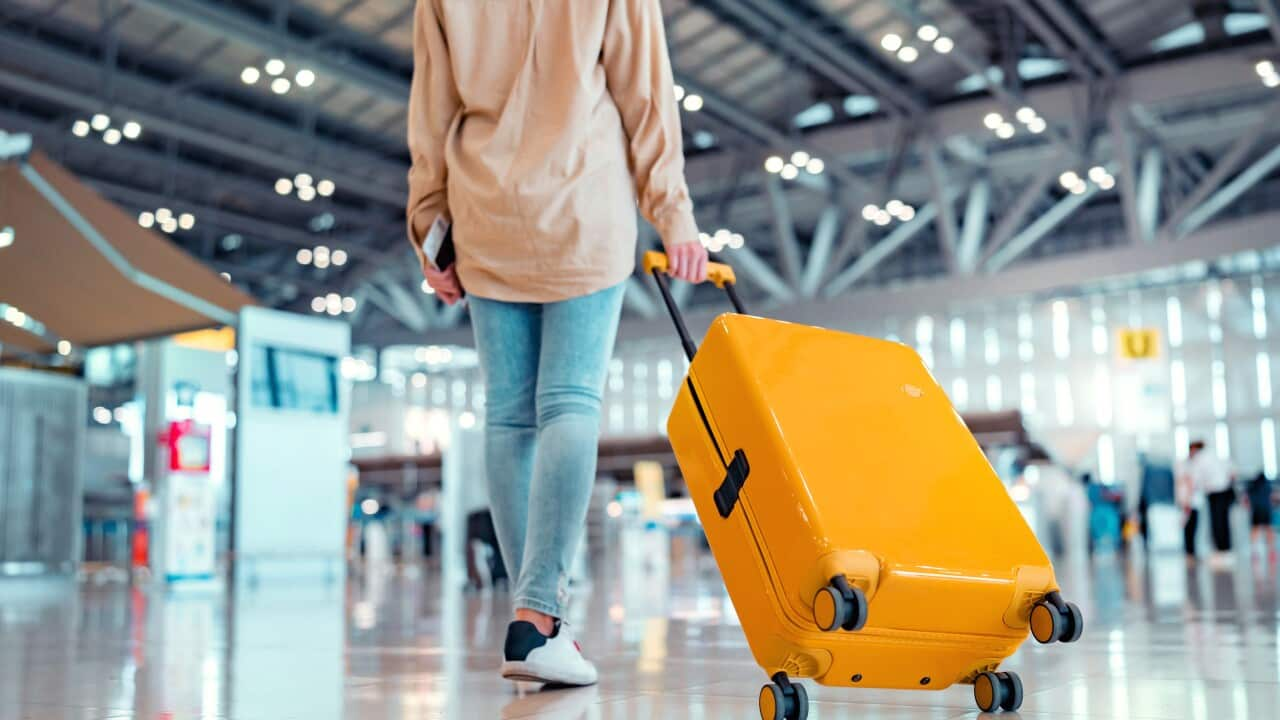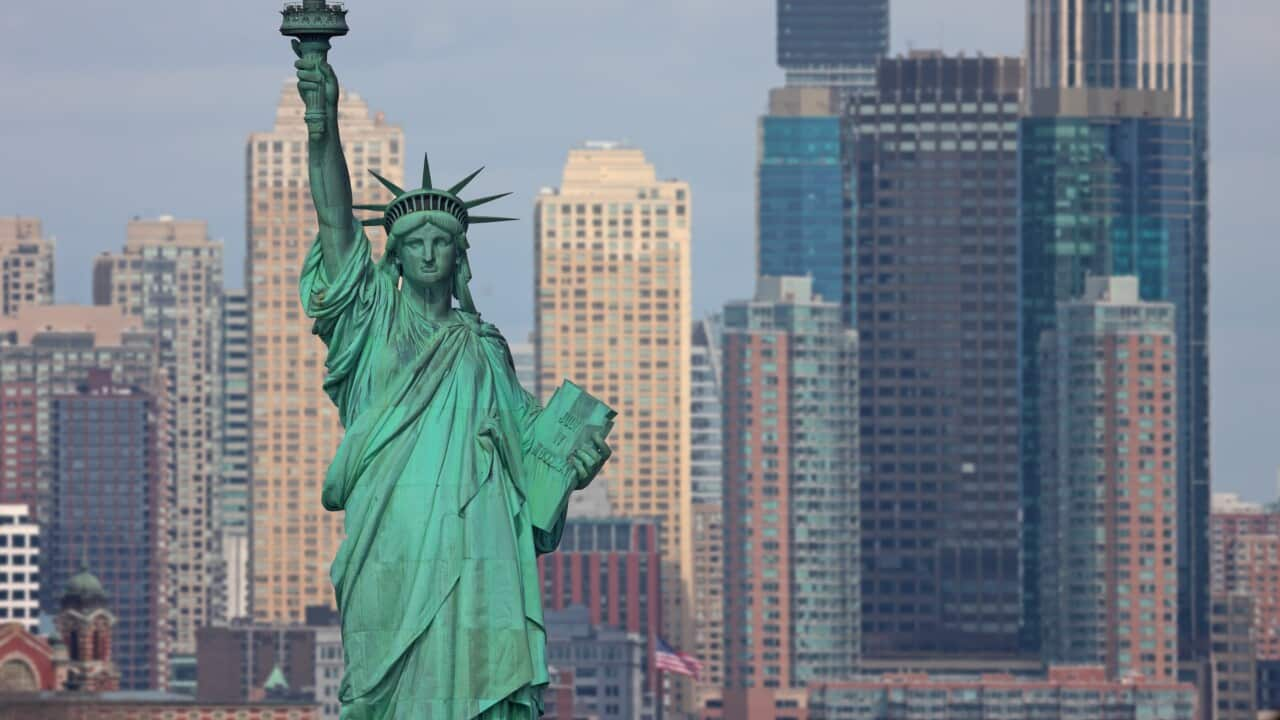Safety concerns, a weak dollar, and border security are some of the issues reportedly contributing to a drop in Australians travelling to the United States.
Recent media reports have suggested Australians are turning away from US travel, with data indicating fewer are visiting and planning trips compared with previous years.
But new figures from the Australian Bureau of Statistics (ABS) paint a different picture, and experts say current statistics should be taken with a grain of salt.
So, are Australians really turning away from US travel, and what are the factors playing a part?
How many Australians are travelling to the US?
According to preliminary data from the US government's International Trade Administration, there were 59,859 Australian visitors to the US in March. That's a 7.1 per cent drop from March last year, when 64,418 Australians visited the US. The Easter holiday period also fell in March in 2024 while this year, it was in April.
This year to date, 201,867 Australians have arrived in the US, according to the data. That's about 1,500 fewer people than the corresponding period last year.
But according to the latest data from the ABS, travel to the US appears to have slightly increased. The ABS' short-term resident returns for March 2025 tracked 55,870 Australians returning from the US, up from 50,650 for the same period last year.
Professor Sarah Gardiner, director of the Griffith Institute for Tourism, said the difference in numbers is likely due to different methods of data collection.
"A lot of our ABS data is done by our arrivals card, so when people come in through our entry points, international airports and so forth, it is tracked through that methodology," she said.
"If they're [the US] using different types of tracking, maybe survey data or other data sources, there can be some variability in the data."
Gardiner said the March travel data is not an accurate reflection of current issues.
As well as the data already being months old, those travelling in March would likely have booked their trips much earlier, without knowing about current issues.
"Things are changing quite quickly in terms of the situation, and so you've got a bit of forward booking in that system as well," she said.
"So it's where it goes over the next few months that will be quite interesting to see if there is any impact."
Are Australians less interested in travelling to the US?
A national survey of 1,509 Australians aged 18 to 65 indicates fewer people were planning a trip to the US from 15 March to 15 May than the corresponding period 12 months ago.
The quarterly poll, commissioned by the Tourism and Transport Forum, had the US as the fifth most popular international destination for autumn 2024, with 8 per cent of travellers headed there.
The US slid to seventh on the list for this autumn, scooping up less than 6 per cent of Australia's overseas travel market.
Sara Dolnicar, professor of tourism at the University of Queensland Business School, said she expects the numbers will rebound relatively quickly.
Dolnicar said tourists are "very reactive" to world events and often base travel decisions around factors such as currency exchange rates, safety or security concerns, and environmental issues, particularly when travelling to far-away places like the US.
"Travel is about adventure, but controlled adventure, so you don't want to really expose yourself to unnecessary risk," she said.
"(Australians) might just be saying 'right now it doesn't seem stable enough for me to drag my family across there and not knowing what's going to happen',".
She believes many Australians remain interested in travelling to the US, but may delay visiting until they feel more secure, particularly those who are putting trips off due to financial concerns.
"Tourism is exceptionally resilient," she said.
"My prediction ... is that it will bounce back because these are not dreams given up. They are deferred dreams or deferred aspirations of people."
What are the factors influencing Australian travel to the US?
Dean Long, CEO of the Australian Travel Industry Association, said he believes interest in travel to the US has dropped in recent months.
"The priced product in the US is very high when compared to the value that you can get across Southeast Asia in particular and even parts of Europe," he told the Australian Associated Press in April.
"We think currency and value are the two things that are really driving that."
The exchange rate for the Australian dollar last week fell below 60 US cents, its lowest level since April 2020,
In a briefing, Tourism Economics, a division of the United Kingdom-based economics advisory firm Oxford Economics, said policies and pronouncements from the Trump administration were contributing to a growing wave of negative international traveller sentiment toward the US.
"Heightened border security measures and visible immigration enforcement actions are amplifying concerns," it said.
"These factors, combined with a strong US dollar, are creating additional barriers for those considering travel to the US."
Is the US tourism industry in trouble?
According to the US International Trade Administration data, visitor numbers from countries other than Australia are also declining.
According to the dataset, the United Kingdom — the US's top tourism-generating country — had a 14.3 per cent decrease in visitors compared with the previous year.
Germany recorded a 28.2 per cent decrease, while the number of visitors from Spain and Ireland dropped by 24.6 per cent and 26.9 per cent respectively.
Dolnicar said these reductions could be concerning for the US tourism industry.
"If you think about the tourism industry ... globally it's about one in 10 jobs that's funded by the tourism industry and it's about 10 per cent of GDP (gross domestic product)," she said.
"So if you have that kind of drop of numbers, that has immediate economic implications for a country."
Some countries recorded modest increases, including Japan, Brazil and Italy, with rises of 3.6 per cent, 6.1 per cent and 3.4 per cent respectively.
— With additional reporting by the Australian Associated Press.





